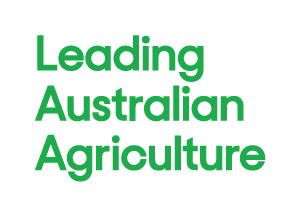Agricultural interest rates have held steady this month in line with the Reserve Bank of Australia’s decision to hold official cash rates at 3.50 percent, the August Agribusiness Loan Monitor has found.
The Monitor, released today by the National Farmers’ Federation (NFF), shows no change across the board from the financial lenders.
NFF Economics Committee Chair John McKillop said it was a marked difference from last month, when all financial lenders reduced their agribusiness rates following the RBAs cuts in May and June.
“Unsurprisingly, what we are seeing is that the banks are choosing to follow the RBA interest rate decision when the central bank decides to hold rates steady, but not necessarily following the decision immediately should the RBA decides to drop rates,” Mr McKillop said.
“The fact that the banks are now choosing to move independently of the RBA adds a layer of complexity for farmers in their financial planning and risk management.
“And given that the Bureau of Meteorology continues to predict a return to drier than average conditions for eastern Australia, planning for the coming seasons is a key priority for the farm sector,” Mr McKillop said.
Mr McKillop’s comments come following the NFF’s meeting with the Minister for Agriculture, Fisheries and Forestry on drought preparedness for Australian farmers this week, with financial preparation one of the key considerations.
“We are currently seeing the impact of droughts on global agricultural markets: particularly the severe and prolonged drought currently gripping the United States,” Mr McKillop said.
“This week the US President announced that the US Government would buy $170 million of domestic meat supplies from farmers, over and above the $30 million already pledged in drought aid.
“Given that the US is the world’s largest agricultural exporter, this decision could potentially impact Australia’s agricultural sector. Australian farmers export some 60 percent of all our agricultural produce, which means we are high susceptible to global markets prices.
“In such a volatile situation, with conditions far outside our control – like weather and global commodity prices – sound financial planning and risk management has never been more important for Australia’s farmers,” Mr McKillop said.
The Agribusiness Loan Monitor is compiled each month by leading money market monitor Canstar and published by the NFF. The August Monitor is available http://www.nff.org.au/publications.html#cat_2119[here], along with all previous editions.
You may also like
It was our biggest farmer rally; yet 40 years on we’re in the same battle
Opinion by David Jochinke, National Farmers’ Federation President Forty years ago today (July 1), 45,000 farmers packed their station wagons, fixed a few cheese sandwiches and sarsaparillas for the road, and...
NFF and Tonga reaffirm shared commitment to sustainable PALM scheme
The National Farmers’ Federation (NFF) and the Kingdom of Tonga have reaffirmed the importance of the Pacific Australia Labour Mobility (PALM) scheme. The Acting High Commissioner of Tonga, His Excellency Mr...
NFF Lunch and Learn Series discusses a food security strategy
The National Farmers’ Federation (NFF) has launched its new ‘NFF Lunch and Learn’ series with a compelling inaugural session centred on Australia’s food security. Held on 30 June 2025, the first event attracted more...





Add comment